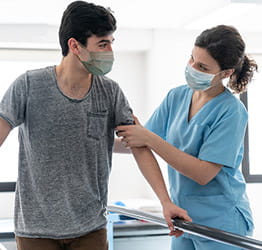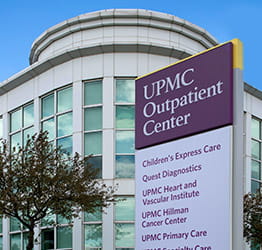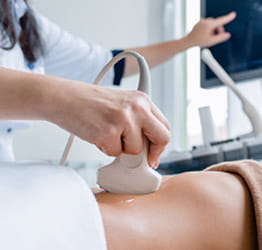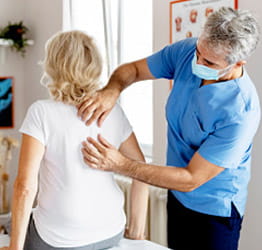On this page
What Is A Brain Aneurysm?
A brain aneurysm is atype of cerebrovascular disorder. It occurs when the wall of an artery in your brain becomes weak and balloons outward. The ballooned part of your artery is the aneurysm.
Because aneurysms have thin walls, they can leak or burst. If the aneurysm ruptures (bursts), it can cause serious, life-threatening bleeding in your brain and hemorrhagic stroke symptoms that require emergency treatment.
Brain aneurysms:
- Are more common in older people and women.
- Come in many sizes and can burst at any time.
- Tend to form where arteries branch because these are the weakest places in your artery walls.

What happens when you have a brain aneurysm?
Not all brain aneurysms need to be treated immediately. If your aneurysm is small and slow-growing, your doctor may recommend ongoing monitoring.
If your brain aneurysm is large, fast-growing, or at high risk of bursting, your doctor may recommend a procedure to repair the aneurysm and prevent rupture.
If your aneurysm has already ruptured, you will need an emergency procedure to stop the bleeding in your brain and repair the aneurysm.
Can an aneurysm be removed?
Although an aneurysm can’t be removed, your doctor may be able to perform a procedure to repair the aneurysm. Aneurysm repair typically involves blocking blood flow to the aneurysm.
What are the types of brain aneurysms?
There are several types of brain aneurysms, including:
- Dissecting aneurysm — Caused by a tear in the artery wall that allows blood to get between the other layers.
- Fusiform aneurysm — An aneurysm that bulges out on all sides of the artery.
- Mycotic aneurysm — Caused by an infection that weakens the artery wall.
- Saccular (berry) aneurysm — The most common type of brain aneurysm, berry aneurysms typically occur in adults on the arteries at the base of the brain.
Brain aneurysms may also be classified by size, including:
- Small — The width of a pencil eraser.
- Large — The width of a dime.
- Giant — The width of a quarter.
How common are brain aneurysms?
According to the Brain Aneurysm Foundation, about 1 in 50 people in the U.S. are living with an unruptured brain aneurysm. Approximately 30,000 people in the U.S. have a brain aneurysm rupture every year.
How long can you have an aneurysm without knowing?
Aneurysms can develop at any time and may not cause symptoms until they are large. If you have a small aneurysm, you may not know you have it. In many cases, aneurysms are found during testing for another condition.
What causes brain aneurysms?
Brain aneurysms occur when there is a weakened area in a blood vessel wall.
What are brain aneurysm risk factors and complications?
Brain aneurysm risk factors
You're at a higher risk of developing a brain aneurysm if you have:
You may be at higher risk of an aneurysm rupture if you:
- Have a family history of aneurysm ruptures.
- Have high blood pressure.
- Have a large aneurysm, or one that keeps growing.
- Smoke cigarettes.
Complications of brain aneurysms
When an aneurysm ruptures, blood leaks into the fluid-filled space around your brain.
This bleeding is dangerous and can cause:
- Brain damage.
- Changes in blood sodium levels.
- Disability.
- Death.
- Increased pressure inside your skull.
- Loss of movement or sensation in certain parts of your body.
- Seizures.
- Stroke.
- Too much cerebrospinal fluid in your brain.
- Vasospasm or delayed cerebral ischemia (DCI), which leads to tightening in the arteries that limits blood flow.
How can I prevent brain aneurysms?
There is nothing you can do to prevent a brain aneurysm. However, managing risk factors, such as high blood pressure, diabetes, and high cholesterol, as well as avoiding smoking and recreational drug use, may reduce your risk of a brain aneurysm or its rupture.
Back to top.
What Are the Signs and Symptoms of Brain Aneurysms?
Symptoms of an unruptured brain aneurysm
If your aneurysm is small, you may not have any symptoms. Most aneurysms cause no symptoms until they become large or rupture.
An aneurysm that's large enough to press on your tissues or nerves may cause symptoms such as:
- Double vision or other vision issues.
- Numbness.
- Pain above or behind the eye, often with a dilated pupil.
- Paralysis on one side of your face.
- Weakness.
Symptoms of a ruptured aneurysm
When an aneurysm ruptures (bursts), the most common symptom is a severe and sudden headache. Most people who've had a rupture describe it as the worst headache of their lives.
Other symptoms of a ruptured aneurysm may include:
- Cardiac arrest.
- Double vision.
- Loss of consciousness.
- Nausea and vomiting.
- Seizures.
- Sensitivity to light.
- Stiff neck.
When should I see a doctor about my brain aneurysm symptoms?
If a brain aneurysm is causing symptoms, it may be large and at higher risk of rupture. A brain aneurysm rupture is a life-threatening emergency that requires immediate treatment.
If you are experiencing symptoms of a brain aneurysm or brain aneurysm rupture, you should dial 911 right away.
Back to top.
How Do You Diagnose Brain Aneurysms?
When you arrive at the hospital, your doctor will ask about your symptoms, order tests, and perform physical and neurological exams to diagnose a brain aneurysm.
What to expect during your visit
If your doctor suspects a brain aneurysm, they will:
- Order imaging or other tests.
- Perform a physical and neurological exam.
- Review your health history and medications.
Tests to diagnose brain aneurysm
Your doctor may request imaging tests to examine how blood flows through the blood vessels in your brain.
Diagnostic tests for brain aneurysms include:
- CT or MR angiogram (CTA or MRA) — Also known as arteriography or an arteriogram, this test uses x-rays or magnets and a special contrast dye to look for problems with the blood vessels in your brain.
- CT scan — A test that creates images of your brain and is used to diagnose stroke, brain aneurysm, or another type of brain injury.
- Doppler ultrasound — A noninvasive test that uses ultrasound waves to measure blood flow through your arteries and veins.
- Lumbar puncture (spinal tap) — Checks for blood in your cerebrospinal fluid.
- MRI — Uses a combination of large magnets, radio frequencies, and a computer to produce detailed images of your brain.
Brain aneurysm prognosis
Your prognosis after a brain aneurysm depends on several factors, including the severity of your condition and how quickly you receive medical treatment. In some cases, brain aneurysms can be deadly. Some people who survive may have no long-term disability, but others may have permanent disability ranging from mild to severe.
Back to top.
How Do You Treat Brain Aneurysms?
Some aneurysms do not need to be treated right away, especially if they have a low risk of rupture. However, if your aneurysm is large or growing, your doctor may recommend surgery to prevent rupture.
If your aneurysm has ruptured, you will need emergency treatment to stop the bleeding and repair the aneurysm.
Depending on your condition, your doctor may recommend:
Endovascular surgery
Endovascular surgery is the most common type of procedure to treat brain aneurysms. It involves using a small, thin tube called a catheter to insert small coils that block blood flow to the aneurysm. Sometimes, your doctor may also use small devices called stents or flow diverters.
During endovascular surgery, your doctor will:
- Insert a small, thin tube called a catheter through a small incision in your groin.
- Use x-ray imaging to guide the catheter to the site of the brain aneurysm.
- Repair the aneurysm.
- Remove the catheter and close your incision.
Open microsurgery
Open microsurgery is performed through a surgical opening in your skull (craniotomy) using small surgical instruments. The most common open microsurgery procedure is aneurysm clipping, which involves placing a metal clip around the base of an aneurysm to control bleeding. Your doctor may also reroute blood flow around your aneurysm during a procedure called a bypass.
Why choose UPMC for brain aneurysm care?
When you choose UPMC for brain aneurysm care, you will receive:
- Access to world-class stroke expertise — UPMC is among the world’s best multidisciplinary stroke and brain aneurysm centers. When surgery is necessary, our stroke team is experienced in advanced treatments, including traditional and investigational approaches that are not widely available.
- A full range of treatment options — We offer minimally invasive care as well as traditional open surgical procedures, allowing us to effectively treat all types of brain aneurysms while reducing your risk of complications.
- Multidisciplinary care — We partner with neurologists, rehabilitation specialists, and other medical experts to provide complete care that optimizes your recovery and quality of life.
Back to top.
By UPMC Editorial Staff. Last reviewed on 2025-05-09.

















